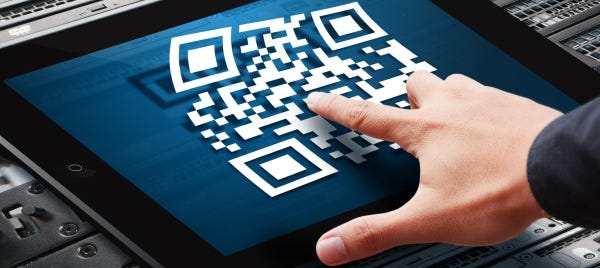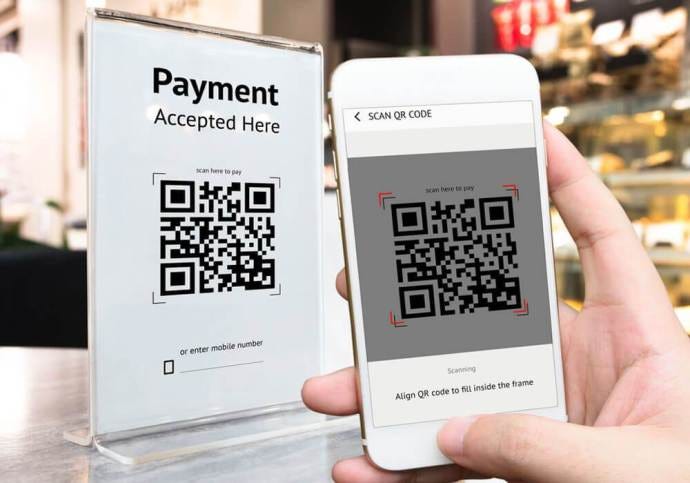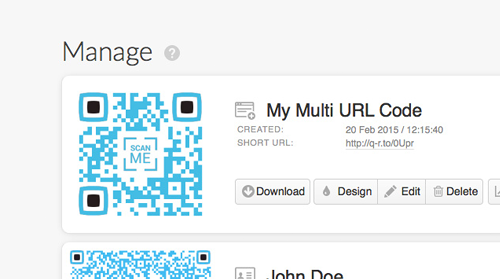Latest news about Bitcoin and all cryptocurrencies. Your daily crypto news habit.

A QR Code (Quick Response Code) is a two-dimensional barcode that was introduced in 1994. It is a machine-readable optical label that stores the information about the product to which it is attached. A single QR code can hold up to 4,000 characters. It consists of patterns of black squares which can be scanned and translated into human readable information using an imaging device.
Not long ago, QR codes were limited to redirect users to certain web pages or URLs. Today, QR codes aren’t limited to sharing information, but they can do much more. From promoting business products to mobile contactless payments, QR codes are making our life easier in a lot of ways.
Excessive use of mobile phones, internet, and remote devices has changed the way consumers and businesses interact. It has given rise to digital marketing where almost every organization is trying to engage clients available on the internet. QR codes can help marketers track performance of the products. Here are some of the applications of QR codes:
QR Codes On Packaging
According to a research, 52 percent of consumers would purchase a product again if they receive premium packaging the first time. Therefore, it is important to create beautiful and appealing packaging on the products. Millennials want aesthetically pleasing packaging with minimal design. QR codes can help you achieve that. Also, GMO products in the US requires to have QR codes on the products so that customers can learn more about the product and its ingredients. So, it is a common practice to include QR codes on product packaging.
QR Codes For Cashless Payments
Retail stores can use QR codes to facilitate quick cashless payment systems. Walmart was amongst the first to use QR code for cashless payments. These can be very helpful in attracting millenials who like the idea of cashless ecosystem. No need to carry cash with you when you can make payment with your smartphones. Now, we can see QR codes at almost all the retail stores, and consumers can make payments easily with the help of their smartphone.
Social Media
Social media is also using QR codes. Giants like Facebook, Twitter, Snapchat allow users to follow accounts by scanning QR codes. WhatApp allows you to open your messages on your computer by scanning a code. All you have to do is scan a code with your phone, and you’re good to go. Brands can use QR codes to build presence on social media by driving more and more users on their accounts. It saves you the hassle of looking up for those accounts by easily redirecting you to the page that you’re looking for.
Tracking Performance Metrics
For marketers, it is very important to keep track of performance metrics. It is usually not easy to see how well a marketing campaign is performing. But QR codes can help with the problem. Based on the number of scans, marketers can understand if the marketing campaign or the product itself is performing well or not. It will help them create better marketing strategies.
Multi URL QR Codes — How Do They Help?
Whether you own a restaurant, retail store, or a travel agency, multi URL QR codes can help you customize your deals according to the time of the day. In simple words, a multi URL QR code is a single code to redirect to multiple online resources. Key features of multi URL QR codes are:
· System-based redirection
· Time-based redirection
· Location-based redirection
· Real-time statistics
· Print-ready reports
· Custom designed QR codes
· High-grade flexibility
Let’s learn more about multi URL QR code’s time-based redirection.
Set Different URLs per Time
Time-based redirection is the best way to promote limited offers using the same QR codes you’ll be using after the offer ends. Some cases of using time-based redirection in multi URL QR codes are listed below:
1. For instance, you can let users avail breakfast, lunch, dinner, and midnight deals at your website or local store using the same QR code. When the time duration for breakfast ends, the users will be automatically redirected to the lunch offer page and so on. Sounds fair enough?
2. Another use-case of time-based redirection is offering discounts on your restraint menu or store products during the Christmas holidays. All users need to do is scan the QR code, avail the discounted coupons or offers, and make the purchase.
3. Moreover, you can use to do A/B testing of your campaigns to see what converts best from the same QR code at different times.
A dynamic multi URL QR code allows you to change the saved information anytime. Thereby, when the offer ends, you can simply replace the offer landing page with a new one.
And anyone can create QR codes. Using a QR code generator with logo like QRzebra, you can create QR codes, customize them per your brand, and track real-time data including time, date, location, device type, and the total number of scans. QR codes make our life faster and easier. From faster checkouts to increased number of sales, there are a lot of reasons we cannot overlook the importance of QR codes. Also, if you’re a business, it is important that you seek out each and every tool to maximize ROI.
Real-World Applications Of QR Codes Today was originally published in Hacker Noon on Medium, where people are continuing the conversation by highlighting and responding to this story.
Disclaimer
The views and opinions expressed in this article are solely those of the authors and do not reflect the views of Bitcoin Insider. Every investment and trading move involves risk - this is especially true for cryptocurrencies given their volatility. We strongly advise our readers to conduct their own research when making a decision.

